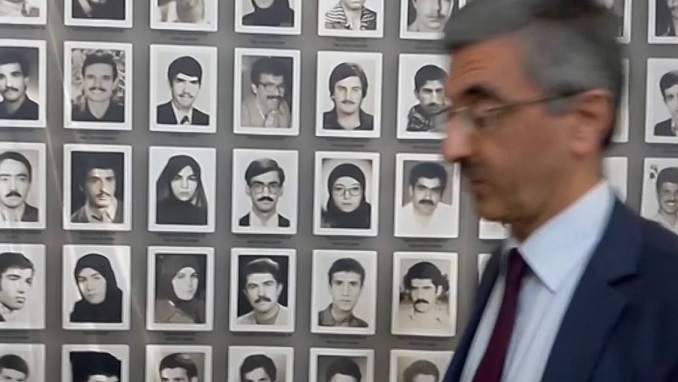
Amnesty International a campaign Monday, urging Iranian regime authorities to “urgently stop the destruction of a mass grave in the southern city of Ahvaz”.
At least “a dozen political prisoners killed during a wave of mass extrajudicial executions in August and September 1988 are buried” in the mass grave. Amnesty International obtained footage which “shows the site is gradually being buried beneath piles of construction waste” after a construction near the area began earlier this year.
“Bulldozing the mass grave at Ahvaz will destroy crucial forensic evidence that could be used to bring those responsible for the 1988 mass extrajudicial executions to justice. It would also deprive families of victims of their rights to truth, justice, and reparation, including the right to bury their loved ones in dignity. By joining Amnesty International’s campaign, people can help to press Iran’s authorities to stop the imminent destruction of the site,” said Philip Luther, Amnesty International’s Research and Advocacy Director for the Middle East and North Africa.
“Instead of desecrating the mass grave with piles of rubbish and waste and further tormenting families, who face repression for their efforts to protect the memory of their loved ones, the authorities should be upholding their duty to preserve all Iran’s mass grave sites so that investigations can be carried out into the 1988 extrajudicial executions and other mass killings,” Luther added.
Amnesty International has urged social media users to join the campaign by promoting the hashtag #MassGraves88 on all social media platforms. Upon a direct fatwa by Khomeini in July 1988, Iranian regime executed over 30,000 political prisoners, the vast majority of whom were activists of the People’s Mojahedin Organization of Iran.
The victims were buried in secret mass graves. The 1988 massacre was deemed the worst atrocity in the Islamic Republic’s history. Many perpetrators who took part in the massacre, are currently holding high positions within the regime.
Iranian regime President Hassan Rouhani, as well as many of his cabinet’s principal figures, held some influential positions in the summer of 1988, while well aware of the bloodbath. Rouhani’s first-term Justice Minister, Mostafa Pour-Mohammadi, was one of four members of the Tehran death commission, and some of his associates were also prominent participants in the massacre. Last month Pour-Mohammadi was replaced by Alireza Avaie. He filled a similar role on the death commission in Khuzestan Province, the same province in which a mass grave is being destroyed.
A few days after the replacement, upon an order by Ali Khamenei, Pour-Mohammadi was appointed as an advisor to head of the Iranian regime’s judiciary Sadegh Larijani.
